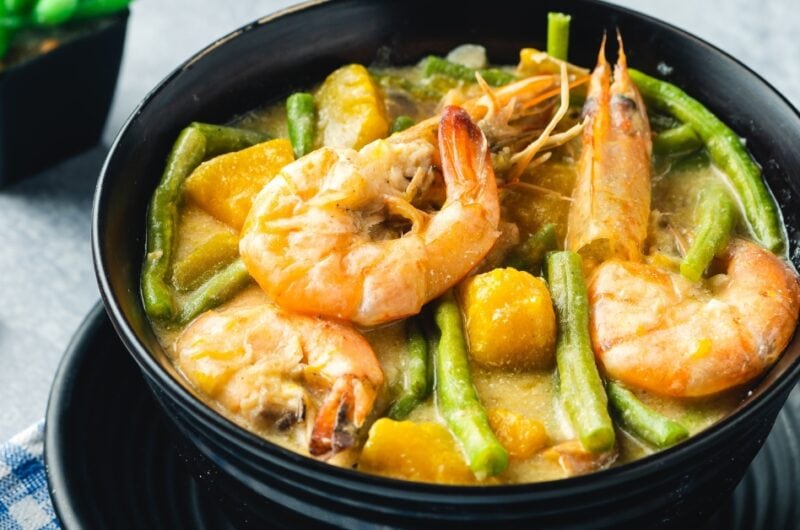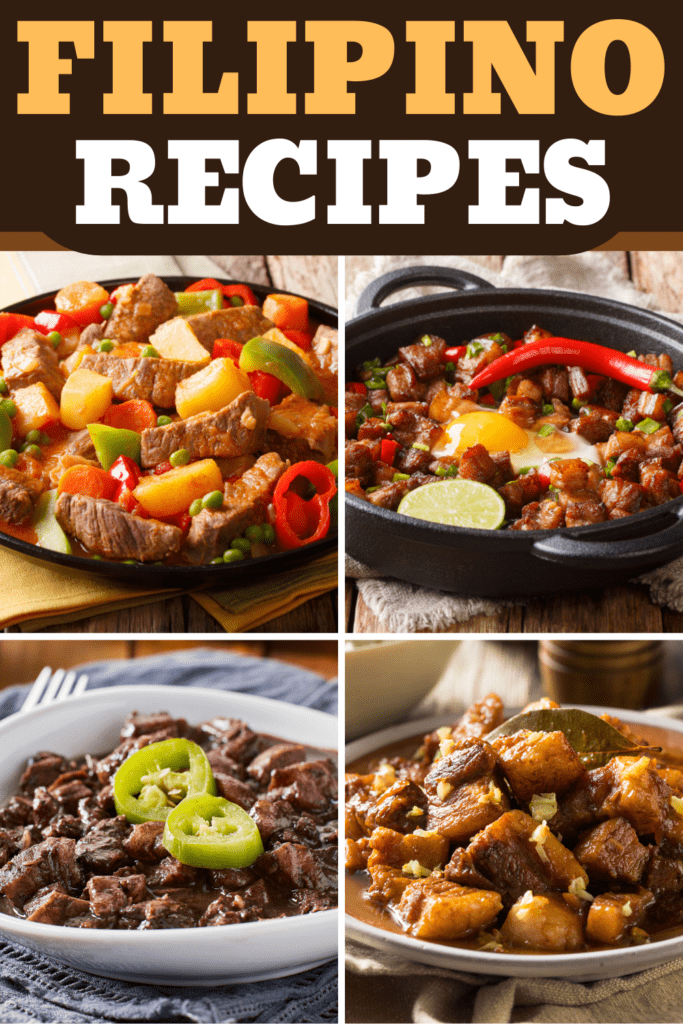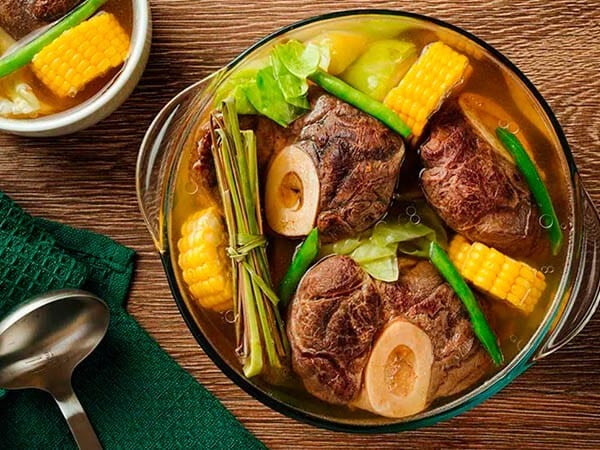Discover the Rich Preference of Filipino Cuisine With These Must-Try Recipes
Filipino cuisine offers a remarkable tapestry of flavors that mirror the nation's rich social heritage. Each meal tells a story, from the savory depth of Adobo to the refreshing tang of Sinigang, inviting cooking lovers to explore a diverse range of preferences.
Adobo: The Famous Recipe
Adobo has emerged as the perfect meal of Filipino food, fascinating tastes buds both locally and abroad. This beloved recipe is characterized by its one-of-a-kind combination of full-flavored, sour, and slightly pleasant tastes, achieved with a precise marination procedure. Generally, adobo is prepared using poultry or pork, although variants exist that include fish and shellfish and vegetables.
The essential active ingredients of adobo include soy sauce, vinegar, garlic, bay leaves, and black pepper, which together develop a rich and aromatic sauce. The food preparation approach normally involves simmering the meat in the marinade, allowing it to soak up the complicated tastes while softening. This procedure not just improves the preference but also functions as a natural preservative, making adobo an ideal meal for storage space.
Adobo is often offered with steamed rice, which matches its robust taste account. Whether delighted in at home or in restaurants, adobo continues to be a staple that personifies the essence of Filipino friendliness, making it a must-try for any individual discovering this lively food.

Sinigang: A Tangy Joy
One more foundation of Filipino food is sinigang, a dish commemorated for its distinctive tasty taste. This tasty soup is traditionally made with a range of meats, consisting of pork, beef, shrimp, or fish, and is defined by its sour broth, which commonly originates from tamarind, environment-friendly mango, or calamansi. The balance of acidity and umami creates a rejuvenating contrast that is both reassuring and invigorating.
Sinigang is usually enriched with a selection of fresh vegetables such as radish, eggplant, water spinach, and string beans, contributing not just to the recipe's taste profile however additionally to its dietary worth - Filipino food recipes. Each household might have its own version, with regional variants that show regional active ingredients and cultural impacts
The preparation of sinigang involves simmering the chosen meat until tender, followed by the enhancement of the souring representative and veggies. This technique allows the flavors to blend perfectly, causing a passionate and gratifying meal. Traditionally offered with steamed rice, sinigang personifies the essence of Filipino friendliness and is a precious staple, usually taken pleasure in throughout family members events and special celebrations.
Lechon: The Festive Roast
Lechon, commonly considered as the focal point of festive Filipino parties, is a delicious baked pig understood for its crispy skin and tender, flavorful meat. This famous recipe is deeply rooted in Filipino society, usually beautifying tables during birthday celebrations, wedding celebrations, and substantial holidays. The preparation of lechon is an art type, requiring precise attention to information, from marinading the pig with a blend of flavors to guaranteeing an even roast over an open fire or in a specialized stove.
Normally, the pig is skilled with a blend of salt, pepper, and local natural herbs, passing on a rich flavor that enhances its natural juiciness. The cooking procedure can take several hours, throughout which the skin changes into a flawlessly crispy layer, developing a fascinating contrast to the delicious company website meat below.
Lechon is typically served with a side of liver sauce or vinegar dip, enhancing its full-flavored profile. It is not simply a meal however a communal experience, as family members and pals collect around to enjoy this superb meal. The aroma of lechon wafting via the air is an invitation to indulge, making it a cherished icon of celebration in Filipino culture.
Kare-Kare: Oxtail Stew
Kare-Kare, a rich and hearty oxtail stew, holds a special area in Filipino culinary custom, celebrated for its distinct taste account and vibrant discussion (Filipino food recipes). This meal is identified by its luscious peanut sauce, which is produced by grinding baked peanuts or utilizing peanut butter, giving it a velvety and nutty significance. Traditionally, kare-kare features tender oxtail, although variants may include tripe or beef shank, each adding to the stew's depth of taste
The preparation of kare-kare normally entails slow-cooking the meat until it comes to be exceptionally tender. The enhancement of a variety of vegetables, such as eggplant, string beans, and banana hearts, not only improves the stew's dietary value but likewise its visual appeal. Served with a side of bagoong, or fermented shrimp paste, kare-kare beautifully balances its rich, tasty notes with a salty kick.
Typically enjoyed during special occasions and family gatherings, kare-kare personifies the significance of public eating in Filipino culture. Its fascinating intricacy and calming heat make it a recipe that is not just satisfying to the palate but also stimulates my website a sense of nostalgia for many Filipinos all over the world.

Halo-Halo: A Sweet Treat
Halo-halo is frequently considered as the ultimate Filipino dessert, celebrated for its vivid mix of textures and tastes - Filipino food recipes. This delightful concoction is a perfect depiction of the Philippines' abundant culinary heritage, incorporating various ingredients that come with each other to produce a revitalizing and indulgent treat, particularly during heat
At its core, halo-halo features crushed ice covered with an array of active ingredients, consisting of sweetened beans, company website jellies, fruits like bananas and jackfruit, and luscious leche flan. A generous scoop of ube (purple yam) gelato crowns the combination, including an abundant, luscious flavor that raises the treat. The layering of ingredients not just creates a feast for the eyes but likewise supplies an intricate interaction of sweet taste and appearance in every spoonful.
Typically offered in a glass, halo-halo motivates restaurants to mix the contents before relishing. This common aspect enhances the dessert's appeal, as everyone's variation can be uniquely tailored. Whether taken pleasure in as a road food extravagance or an unique event reward, halo-halo remains a beloved symbol of Filipino culture, inviting everybody to discover its wonderful and varied flavors.
Verdict
